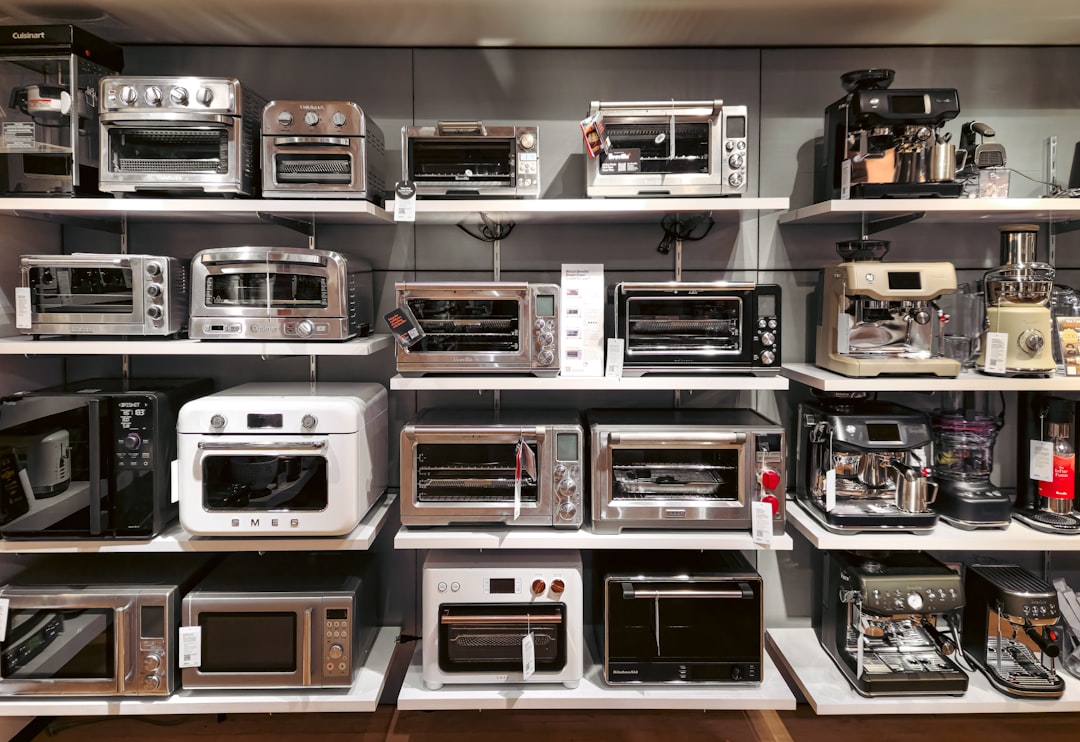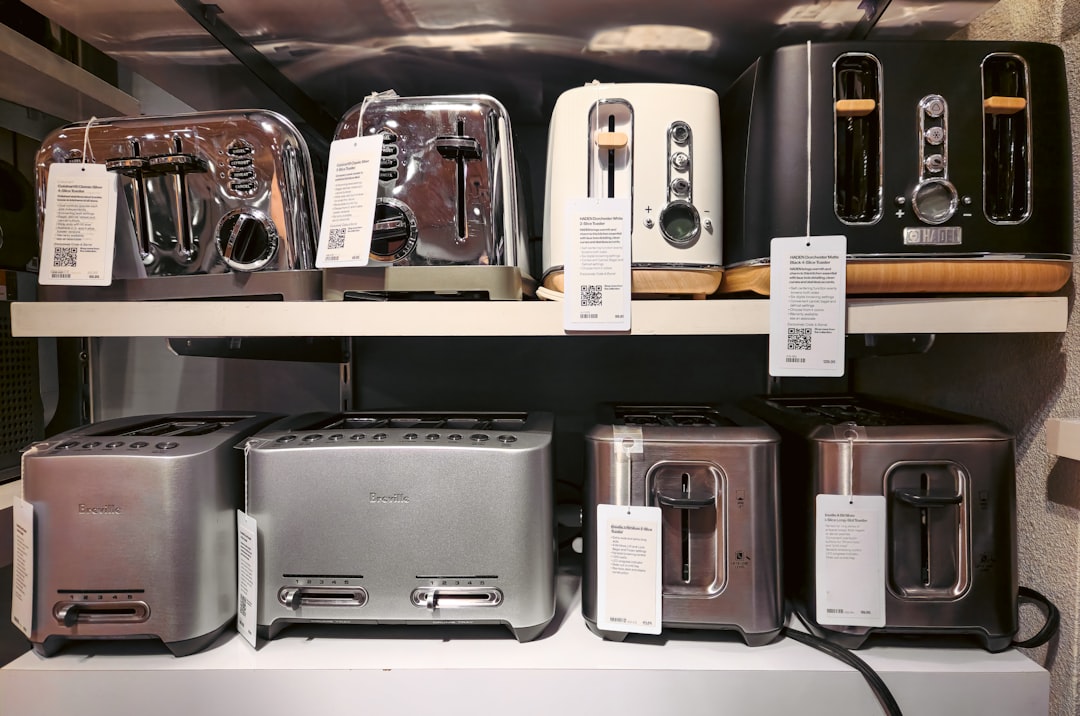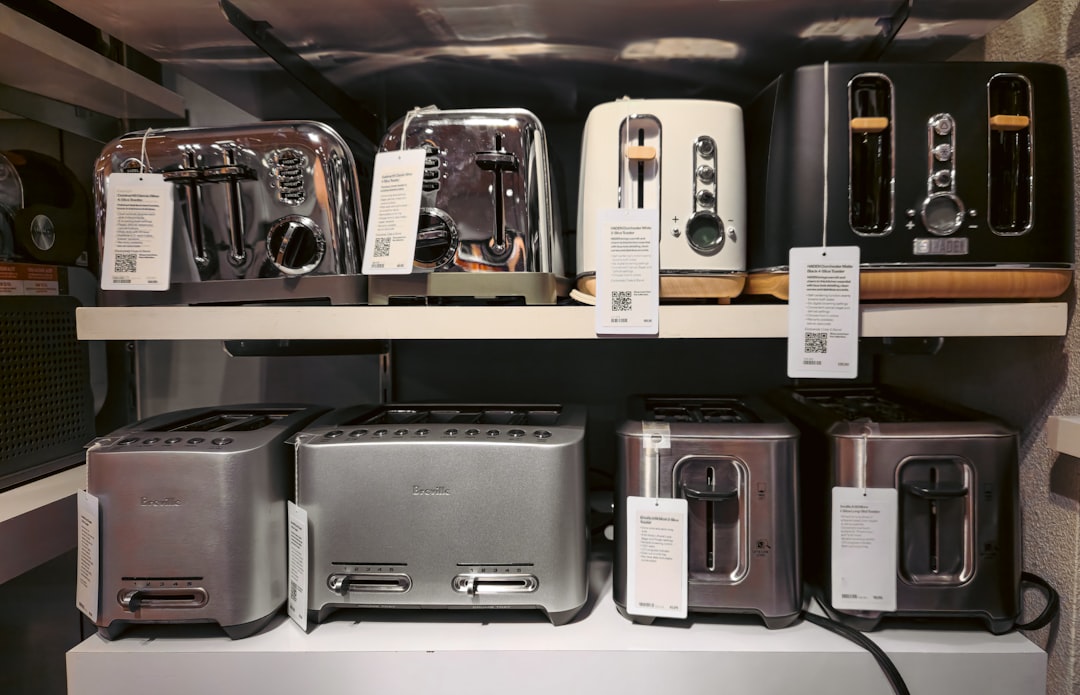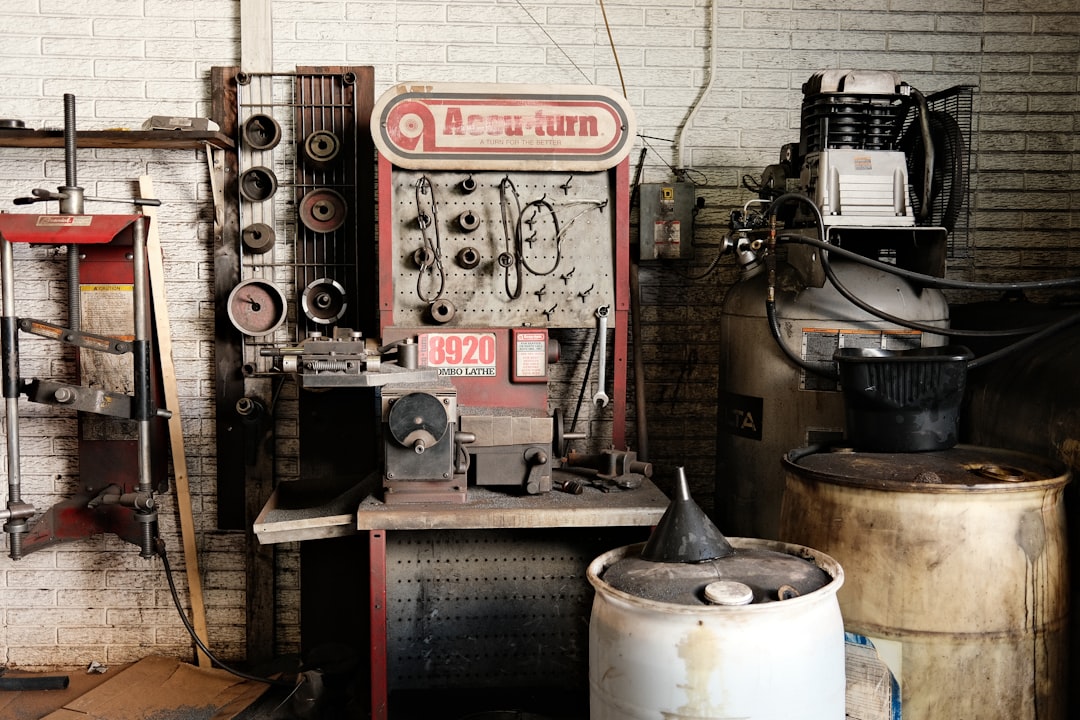

Engage prospects with a scan and streamline customer engagement with FREE QR code marketing tools by Sona – no strings attached!
Create a Free QR CodeFree consultation

No commitment

Engage prospects with a scan and streamline customer engagement with FREE QR code marketing tools by Sona – no strings attached!
Create a Free QR CodeFree consultation

No commitment
In today’s digitally driven world, QR codes have evolved from a novelty to a strategic powerhouse for bridging offline engagement with online action. Few sectors stand to gain as much as commercial appliance repair services, where lost time, disconnected processes, and missing information can directly impact the bottom line. A single scan can now route technicians, facility managers, and customers to the exact information or workflow they need in the moment.
By enabling instant access to repair logs, maintenance documentation, replacement part ordering, or warranty registration, QR codes modernize manual processes that slow teams down. Customers receive faster service and easier feedback options. Providers gain unified workflows, consistent data capture, and better decisions backed by real-time insights. This article shows how to deploy QR codes strategically across your operations to reduce downtime, enhance customer experience, and convert every interaction into measurable value.

Commercial appliance repair professionals often struggle with fragmented workflows and outdated practices such as handwritten logs and manual scheduling. These methods lead to missed revenue, longer downtime, and incomplete records. QR codes bridge the gap between physical assets and digital information, letting teams capture the right data at the right moment. When deployed thoughtfully, they turn routine interactions into clear signals that drive more accurate service and faster resolutions.
Start by defining the jobs to be done. Replace paper-heavy tasks with scan-to-action flows that push each user to the correct destination. From there, set measurable goals and iterate. Modern platforms like Sona QR make it simple to create, deploy, and track codes at scale, so you can see what works and expand quickly.
Replacing outdated analog processes with QR-driven workflows allows technicians and customers to access and update information at the point of need. Over time, a well-managed QR program elevates operational consistency, standardizes data capture, and makes trend analysis far more reliable, which leads to predictable improvements in uptime and customer satisfaction.

Within commercial appliance repair services, gaps in documentation, slow response, and disconnected communication can erode client trust. These issues are common when teams rely on paper forms, phone trees, and ad hoc note taking. That lack of visibility produces recurring pain: underreported faults, untraceable service requests, and missed opportunities to upsell preventative maintenance or parts replacement.
QR codes close these gaps by turning every physical touchpoint into a digital onramp. Whether the code is on a walk-in cooler, a dish machine, or a service report, one scan routes the user to a precise action like booking a visit, viewing a manual, or logging an issue. This creates consistent, auditable data while making it simpler for everyone to do the right thing in real time.
When you implement QR codes with clear intent and meaningful destinations, you solve daily operational challenges and create strategic visibility across your installed base. That combination is what turns QR from a convenience into a growth engine for service organizations.
Commercial repair operations often struggle with inconsistent documentation across assets and sites. The flexibility of QR codes helps standardize how information flows, since each code can be tied to a specific action or asset record. By selecting the right format, you make every scan count for both the technician and the customer.
Dynamic QR codes are particularly useful because they allow destination updates without reprinting and unlock analytics across placements, assets, and campaigns. Static codes have their place for fixed information, but they do not deliver the same level of control or insight.
With Sona QR, you can generate each format, manage destinations centrally, and update content as your documentation and processes evolve. This makes deployment consistent and measurable across teams and regions.

Critical growth moments are easily missed when offline interactions remain anonymous. A maintenance manager might scan a manual but never submit a request. A tech might replace a part without logging the serial number. QR codes capture these signals and transform them into actionable data, allowing you to identify revenue opportunities and reduce churn.
Focus placements where engagement already occurs. The goal is not to add new steps, but to make existing actions smarter and simpler. When a scan replaces a phone call or a handwritten note, you gain accuracy, speed, and attribution.
By treating every surface as a potential digital entry point, you create a network of touchpoints that drive both immediate actions and long-term insights into client needs.

QR codes excel when tied to specific jobs in the field. The most effective use cases guide users to a single next action, capture relevant context automatically, and feed structured data back into your systems. Below are three proven patterns for commercial appliance repair teams.
These use cases convert everyday tasks into reliable digital workflows. Once established, they create a baseline of trustworthy data that powers forecasting, inventory planning, and customer health scoring.
Every QR scan is a signal of intent and context. Over time, multiple scans across placements reveal who is ready for a contract, who prefers break-fix, and which assets pose rising risk. By tagging scans and syncing data to your CRM, you can segment audiences and trigger targeted follow-up that respects the buyer’s journey.
Segmentation in commercial appliance repair often maps to roles and locations. A franchise owner scanning a contract page or a procurement lead scanning a parts catalog signals very different needs than a kitchen manager scanning a cleaning checklist. Use unique codes to distinguish these patterns automatically.
With Sona QR, each code becomes a smart entry point to your funnel. You can capture context at the source, build high-value audiences, and retarget with messages, see Sona’s Playbook titled intent-driven retargeting: driving high-impact campaigns with first-party intent signals, that match what the scanner actually needs.
Many repair providers run campaigns in silos. Flyers do not connect to web journeys, and service vans do not feed into the CRM. QR codes unify these efforts by linking offline touchpoints to trackable digital experiences. This lets you compare channel performance and orchestrate consistent follow-ups across the lifecycle. See Sona’s blog post titled The Essential Guide to Offline Attribution: Maximizing ROI Through Offline Channels.
Think of QR codes as connectors. They do not replace your channels. They provide the link that makes each channel measurable and actionable. That insight is what allows you to shift budget toward the messages and placements that genuinely move the needle.
Centralized QR analytics provide a unified view across these placements. With Sona QR, you can manage all codes, monitor performance, and feed scan data to your CRM and ad platforms so every channel works in concert.
Successful QR programs start simple, then scale with proof. The following checklist ensures your campaigns align with business goals, are easy to scan in real-world environments, and generate data you can act on. Begin with a single use case at one or two sites, then expand as you learn.
Give each step the attention it deserves. The clarity you establish at the outset translates into cleaner data, faster optimization cycles, and better outcomes for your team and your customers.
Identify the primary challenge to solve, such as missing service requests, incomplete asset histories, or low feedback response rates. Define the business outcome clearly, for example enabling instant repair tracking with asset IDs prefilled or collecting real-time maintenance feedback tied to a specific site.
Decide where the QR code will live and what action it will drive. If the goal is to fill the preventive maintenance calendar, the code should lead to a simple booking page that reflects relevant service packages, available time windows, and account-specific pricing.
Use static codes for fixed destinations like a PDF or a general company homepage. Deploy dynamic codes for destinations that may change, or when you need granular tracking, segmentation, and the ability to A/B test calls to action without reprinting labels.
Dynamic codes unlock performance reporting by time, device, and location, and they connect scanning behavior to your CRM. Platforms like Sona QR make switching destinations effortless while preserving your historical analytics.
Incorporate your logo, brand colors, and a clear frame around the code. Pair every code with a concise call to action like Scan to schedule service or Scan for fryer cleaning checklist. Ensure sufficient contrast and include a quiet zone around the code for reliable scanning.
Test codes on multiple devices, at different angles and distances, and in the lighting conditions common to kitchens and mechanical rooms. Confirm that the landing experience is mobile-first and that pages load quickly over cellular connections.
Start with placements that are close to the action: asset labels, job tickets, invoices, and service vans. Use consistent language and iconography so clients recognize and trust the codes. When extending to marketing, prioritize materials that your audience already engages with, such as seasonal tune-up flyers or trade show brochures.
Match placements to audience behavior. For example, facility managers may prefer scanning inside equipment rooms, while executives may scan on printed proposals and invoices. Ensure each scanner type gets a destination suited to their role.
Monitor scan volume, conversion rates, and completion paths. Add UTM parameters to destinations for precise attribution by source and medium. Review which placements drive the most bookings or the highest satisfaction scores, and iterate CTA language or landing page content to improve results.
Run controlled experiments. Test two designs or two offer framings across similar assets or sites. Use Sona QR analytics to identify statistically meaningful differences and roll out the winner. Optimization is continuous, not a one-time task.
A thoughtful execution loop will turn your first deployments into a sustainable program. Over time, this checklist becomes a standard operating procedure that accelerates launches and keeps quality high across teams and locations.

Incomplete analytics make it impossible to link scans to business outcomes. A strong measurement framework captures more than just the fact that someone scanned. It records who, where, and why they scanned, then follows the journey through booking, service completion, invoicing, and renewal. That is how you connect QR engagement to revenue and retention.
Start by deciding which events matter. For most providers, the critical moments include scan, form completion, appointment booking, job closed, invoice paid, and review submitted. When these events are associated with a specific asset and account, your team can analyze patterns that drive uptime, lifetime value, and customer satisfaction.
Sona QR captures real-world engagement and performance by placement and use case. Paired with Sona.com, you can unify these signals with website visits, ad clicks, and CRM activities to build a complete picture of influence from first scan to long-term customer value.
Once your initial deployments are working, the opportunity is to scale without losing quality. That requires consistent design standards, clear CTAs, and integration with the tools your teams use daily. It also means educating staff and customers on the benefits of scanning so adoption becomes second nature.
Choose a small set of patterns and repeat them everywhere. Consistency shortens learning curves for both technicians and clients, which increases scan rates and improves data quality over time.
A unified platform such as Sona QR helps you enforce standards, centralize analytics, and automate handoffs between marketing, sales, and service. As scan volume grows, these foundations keep your program efficient and your data dependable.
QR codes have become an essential foundation for commercial appliance repair services. They break down silos, speed up coordination, and convert physical interactions into digital records your teams can act on. When every asset, invoice, and field visit becomes a digital touchpoint, you build transparency that reduces downtime and unlocks new revenue through preventative maintenance and renewals.
This is more than a convenience upgrade. It is a strategy that aligns operations, customer experience, and growth. With dynamic QR codes, disciplined placement, and a robust analytics stack, you can move from reactive service to proactive, data-driven management of your installed base. Sona QR provides the tools to generate, manage, and measure codes at scale, while Sona.com connects scans to journeys and revenue. Start with a single use case, learn quickly, and expand. The sooner you turn scans into a system, the faster you will see measurable gains in uptime, satisfaction, and profitability. Start creating QR codes for free.
QR codes have revolutionized commercial appliance repair services by turning traditional maintenance and customer support into seamless, data-driven interactions. Whether it’s enabling quick access to appliance manuals, scheduling repairs instantly, or providing technicians with real-time service history, QR codes streamline operations and enhance customer satisfaction. Imagine your clients effortlessly scanning a code to troubleshoot issues or book service appointments, boosting retention and accelerating response times.
With Sona QR, you gain the power to create dynamic, trackable QR codes tailored for your repair services—update information on the fly without printing new materials, monitor scan activity to identify peak demand periods, and directly link each interaction to improved service outcomes. No more guesswork; just efficient, measurable engagement that drives growth and loyalty.
Start for free with Sona QR today and transform every scan into faster repairs, happier customers, and a stronger bottom line.
QR codes enable instant access to repair logs, maintenance documentation, parts ordering, and warranty registration, which reduces downtime, improves customer experience, and creates measurable value.
QR codes facilitate on-time preventative maintenance by providing easy access to maintenance schedules and booking pages, increasing the likelihood of timely service.
Common use cases include equipment repair labels for logging diagnostics, customer feedback requests after service, and service scheduling with reminders for preventative maintenance.
QR codes close offline to online gaps by linking physical touchpoints to digital workflows, ensuring consistent, auditable data capture and real-time information sharing.
Use static QR codes for fixed information and dynamic QR codes when destinations may change or when tracking, segmentation, and A/B testing are needed.
Place QR codes on equipment near control panels, service vehicles, job tickets, invoices, promotional materials, and appointment cards to engage technicians and customers effectively.
Use scan analytics to monitor volume, conversion rates, scan context, and tie scan events to booking, service completion, and revenue for a complete performance view.
Choose a use case, pick the QR code type, design and test the code, deploy across high-impact channels, then track and optimize performance continually.
QR codes capture signals of intent and context, enabling segmentation and targeted follow-up that aligns with the customer's journey, improving retention and upsell opportunities.
Educate teams and customers on benefits, use clear calls to action, maintain consistent design standards, and integrate QR codes into daily workflows to make scanning second nature.
Use Sona QR's trackable codes to improve customer acquisition and engagement today.
Create Your FREE Trackable QR Code in SecondsJoin results-focused teams combining Sona Platform automation with advanced Google Ads strategies to scale lead generation

Connect your existing CRM

Free Account Enrichment

No setup fees
No commitment required

Free consultation

Get a custom Google Ads roadmap for your business






Launch campaigns that generate qualified leads in 30 days or less.
